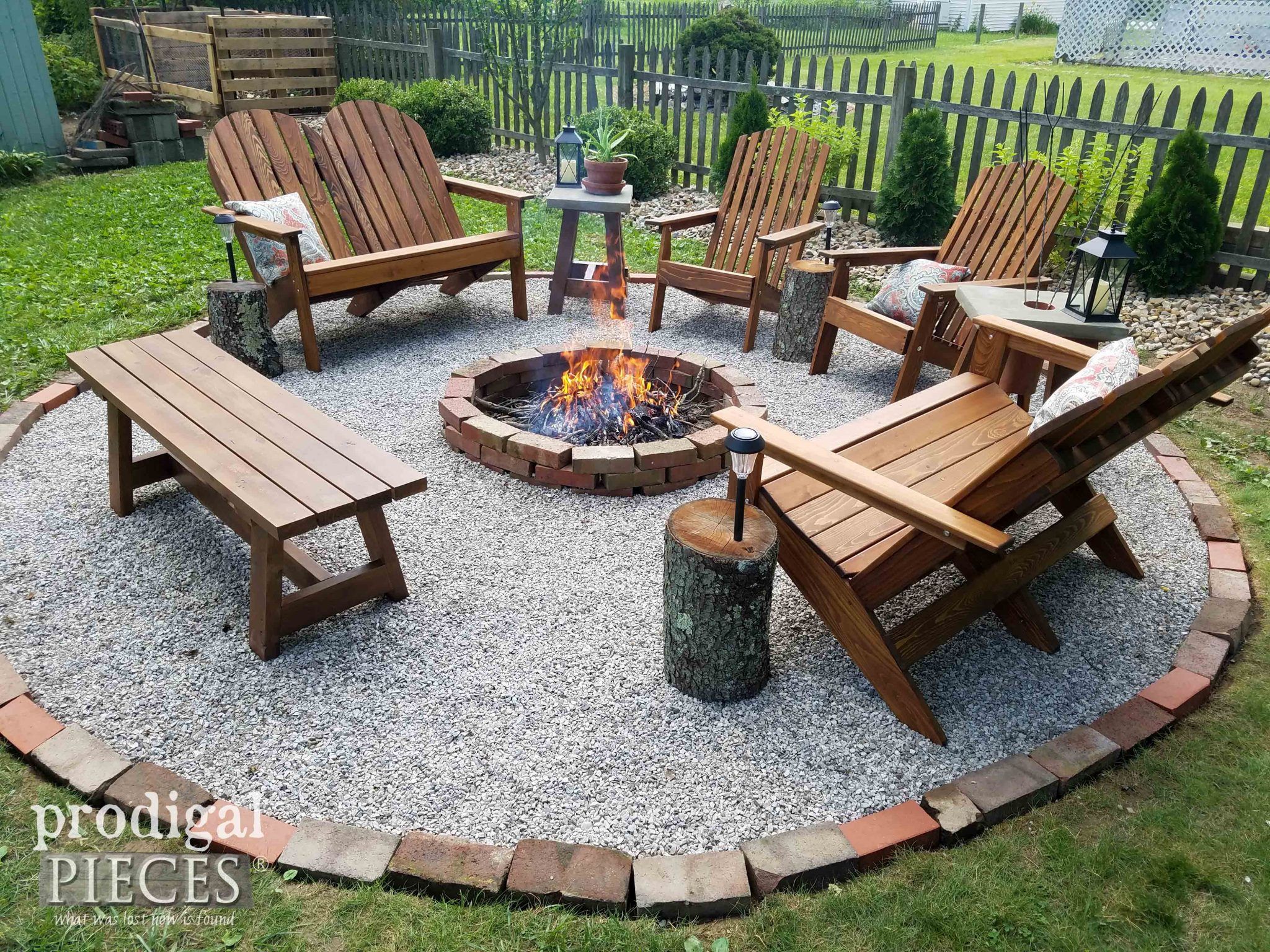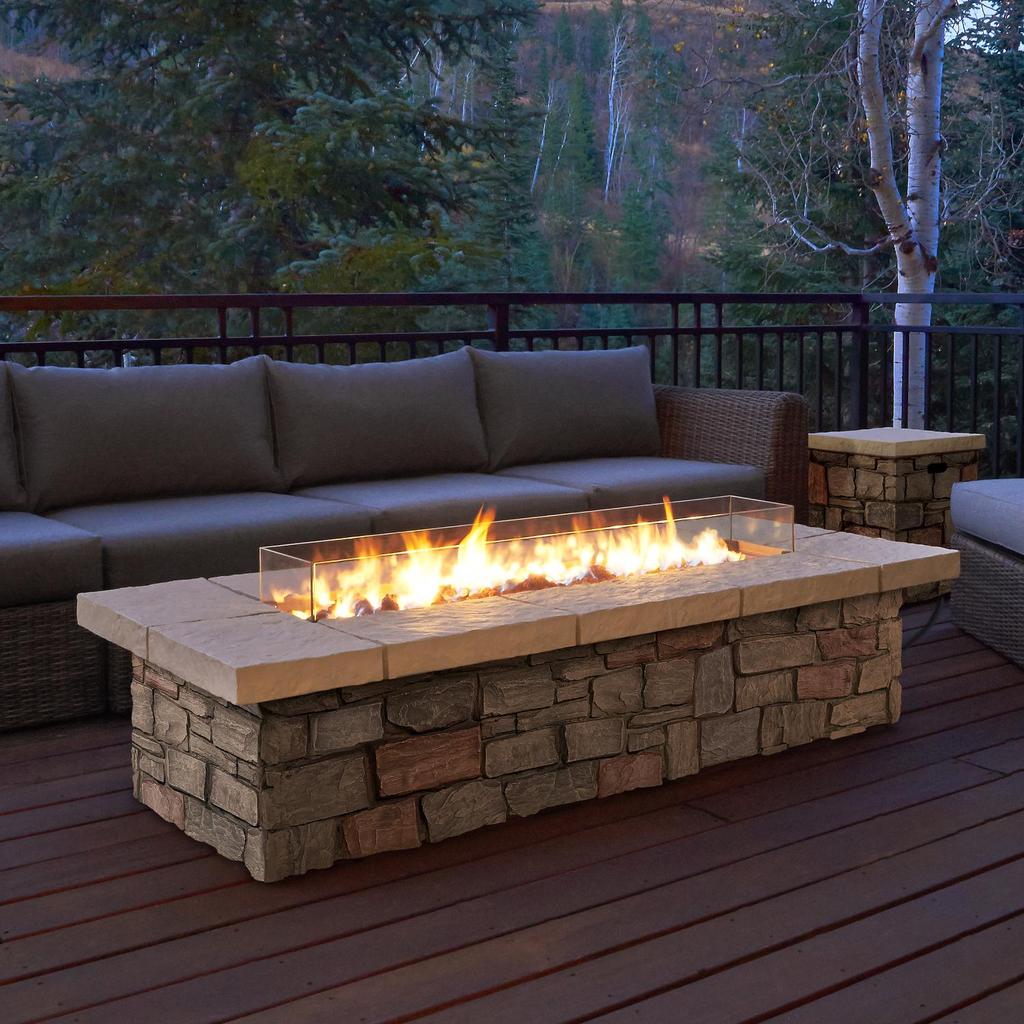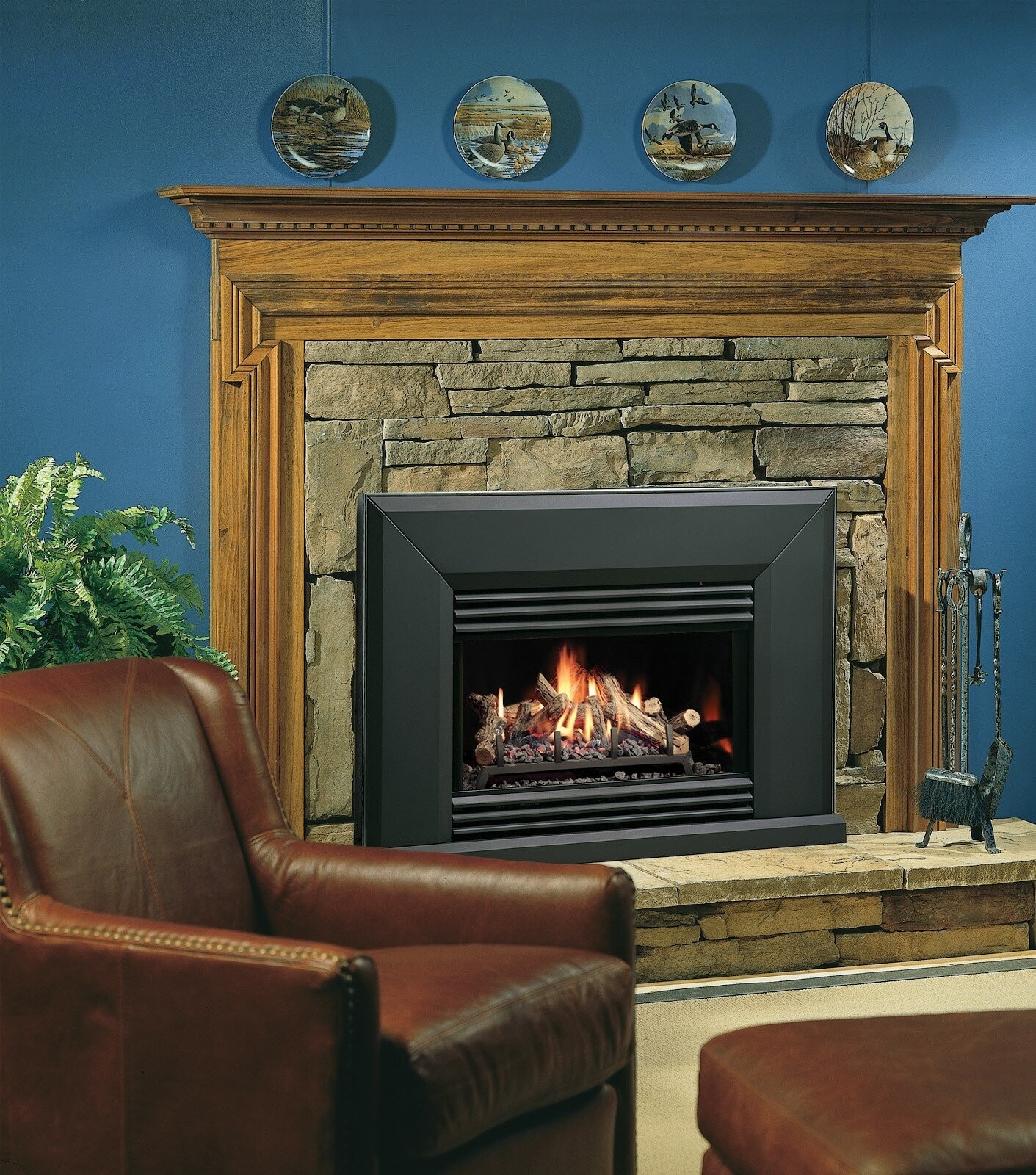“I consider a good dinner party at our house to be where people drink and eat more than they’re meant to. My husband is a really fantastic cook. His mother is Italian, and if you walk into our house, we assume you’re starving.” – Elizabeth Gilbert
Are you renovating your entertainment area in time for summer? If so, are you interested in investing in a new fire pit as part of your revamped entertainment area?
A fire pit has a special place in most of our lives. It brings comfort and warmth on a cool night. And, it still provides a unique ambiance during the hot summer months when sitting outdoors with family and friends, enjoying the warm evenings.
Thus, as part of the overall discussion around the benefits, installation, tips, and mistakes, let’s look at a succinct definition of a fire pit and its function and purpose.
The fire pit: A definition, description, and styles
According to wikipedia.com, a fire pit “can vary from a pit dug in the ground to an elaborate gas burning structure of stone, brick, and metal.” Furthermore, a fire pit’s primary design purpose and function is to prevent the fire from spreading, especially to the surrounding areas.
Fire pits manufactured out of concrete and, or metal are the most common designs that are used today. They can be bought at a store, or custom designed and manufactured. There are also four different types of backyard fire pits available on the market today.
Here is a list of each of these fire pits are well as a description of the function, advantages, and disadvantage:
Wood-burning fire pit
A wood-burning fire pit is the quintessential representation of a traditional campfire. It evokes the same ambiance and atmosphere as a campfire made on a camping trip. The only difference is that the fire pit fire is in your backyard, and the fire is built inside a containing metal bowl, which is mounted on a fire pit stand.
They are also designed with different metal cutouts, and the reds, oranges, and yellow colors of the flames escaping through these cutouts add to the atmosphere. Often, the only difference between these fire pit bowls is their size. And, they often come with a screen cover to prevent the sparks from escaping.
The challenge with wood-burning fire pits is that many cities, counties, and states are starting to frown upon the wood-burning models. This is because of fire bans and air particulate emission bans.
Simply stated, during the current global warming, climate change, and hot, dry summers, it is a simple matter for a spark to fly up from a fire, even if it is contained within the fire pit and land on the surrounding ultra-dry vegetation. This will then possibly start a fire of the magnitude of the recent fires in Australia. In summary, about 70% of the natural forests and bush was burnt in the flames, destroying circa one billion animals and killing thirty-four people.
And, because these fires burnt so hot, they created their own eco-systems with Pyrocumulonimbus clouds and dry thunderstorms, including severe lightning strikes, that caused the fires to jump to separate locations. The pyro clouds grew so tall that they allowed the smoke from the fires to get into the stratosphere and travel more than 1000 miles to New Zealand.
Therefore, even though this comparison sounds like an over-exaggeration, anything can happen; thus, it is better to be safe rather than sorry.
Gel fuel fire pit
Gel fuel is manufactured from 90% isopropyl alcohol or rubbing alcohol mixed with a gelling agent like soy wax or calcium acetate. It is the newest of all of the portable fuels. It is clean-burning, does not spill when knocked over, will not cause a fuel fire with escaping sparks, and does not produce noxious fumes as a by-product if burned indoors.
When used in your fire pit, gel fuel burns a deep yellow. Unfortunately, it does not provide as much heat as a wood fire. Nor does it produce the same ambiance. And, because there is also no burnt wood smell, which may or may not be a good thing. There is also no smoke produced as a byproduct of the fire.
However, as described above, it is a far safer fuel to burn than a wood fire. And, this point alone provides the raison d’etre for using gel fuel fire over a wood-burning fire.
Natural gas fire pit
A natural gas fire pit is similar to a propane fire pit. But it has a permanent connection to the natural gas line that runs into your home. Thus, if you have an existing gas line, then this fire pit is worth considering. The most significant advantage of a natural gas installation is that you will never run out of gas. The second benefit of this fire pit is that it is the most cost-effective and the easiest to maintain.
However, on the other hand, the natural gas installation is not portable, which means that you cannot move your fire pit away from the gas connection.
Propane fire pit
The propane fire pit is the most convenient fire pit available on the market today. It can be lit and enjoyed without having to add more wood or refill the gel fuel while the fire is burning. Also, this fire pit has the largest bowl of all the fire pits. Succinctly stated, it is bigger than both the wood-burning and fuel gel fire pit. They are often designed as the focal piece of the entertainment area.
The propane tank used to fuel the fire this fire pit is usually a 20-pound tank that you can buy at your local grocery store. Both the propane tank and ignition switch are typically housed underneath the bowl.
Finally, this fire pit is very versatile. Essentially, it is location-independent and can be placed anywhere in your backyard.
Light up your backyard today!
Fire up your weekends and evening installing a cool and elegant fire pit on your backyard.
The fire pit installation: Tips and mistakes to avoid
There are several ways to install a fire pit. At the outset of this part of this discussion, it is vital to take cognizance of the fact that your fire pit’s placement and installation depends on whether it is a permanent or portable installation as well as the fuel source you intend to use.
Therefore, before you purchase a fire pit’s components, it is essential to answer the following questions:
Is the fire pit going to be installed as part of the overall renovation project? Or, is it an extra feature that you are going to fit into an existing entertainment area?
- Is the fire pit going to be fitted as part of a permanent installation; as a central focus point of your new backyard entertainment area? Or, do you perhaps wish to move it around your backyard to where people are gathered?
- What fuel source do you intend to use?
- Do you need to apply for a permit from your local authorities?
- What preparations to you need to make to your yard before installing a fire pit?
By way of answering these questions, let’s consider the following points:
Construction materials
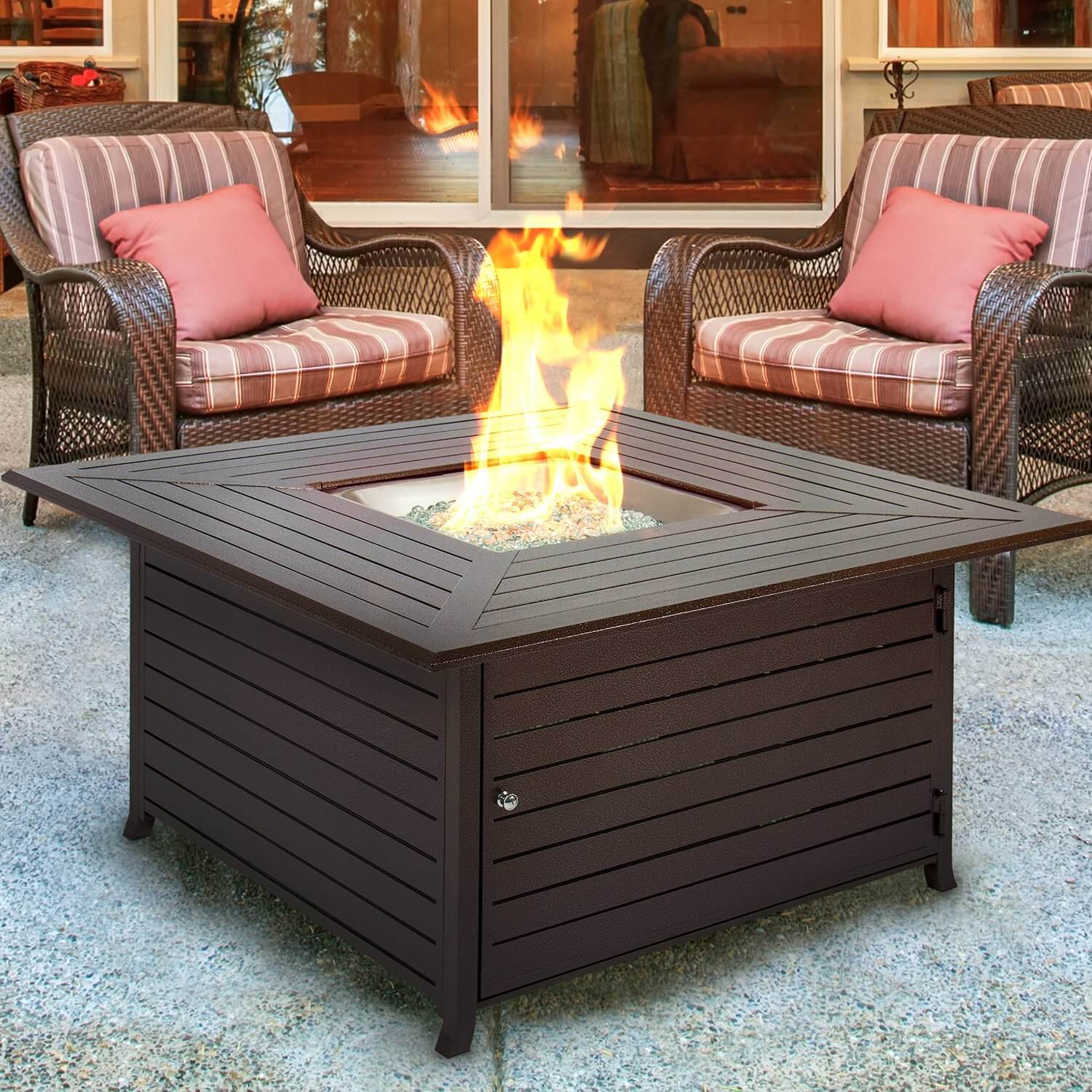
Choosing the correct materials will make it last long and look great.
When considering whether to build your new fire pit into a fixed structure in your new, or existing, entertainment area, it is vital to remember that the metal bowl will get hot from the fire. Therefore, it is vital to use fire bricks as the inside layer of the constructed structure. It is acceptable to use normal bricks or brick pavers on the structure’s outsides. However, these bricks and pavers will crack from the heat generated by the fire pit.
Using collected stones gathered from the fields or rivers is also a possibility. However, it is critical not to use sedimentary rocks as they contain air bubbles and could explode when heated to a specific temperature.
In essence, there are three types of sedimentary rocks:
- Common sedimentary rocks include sandstone, shale, and limestone, which often start out as sediments that are carried in rivers and deposited on the sea or lake beds.
- Clastic sedimentary rocks comprise pieces of pre-existing rocks that are loosened by weathering and transported to areas where sediment is lying. Over time, the sediment and the rock pieces are compacted and compressed together to form new rocks.
- Biological sedimentary rocks form when organic matter dies and is compressed to form sedimentary rocks.
Thus, it is vital to make certain that you do not use any rocks that have the potential to explode when heated to a specific temperature.
Fire pit fuel source
At the outset of the construction process, it is vital to make sure that you know what fuel you will burn in your new fire pit. For example, should you choose to burn natural gas, you need to place your fire pit where a gas line can be installed.
And, if you are planning on a wood-burning fire pit, it’s vital to make sure that the fire pit either has a screen over it to prevent sparks from flying up and catching fire, or you need to make sure that the fire pit is not situated under a flammable roof. A gel fuel fire pit is the best type to install under a permanent roof.
Permanent or portable
If you choose to purchase a portable fire pit, it’s vital to buy a stand with the fire pit bowl. Incidentally, a propane gas fire pit will work very well when installed as a portable device. The 20-pound propane gas bottle and the ignition switch will fit under the stand; thereby, keeping it out of the way so that people do not trip over the bottle or bump into the bottle when navigating their way around your new entertainment area.
On the other hand, a wood-burning, gel fuel, or natural gas fire pit will work very well as a permanent or fixed installation. As mentioned above, it is vital to make sure that you use heat-resistant materials to construct the fire pit’s external structure. Otherwise, they will crack and eventually crumble, necessitating expensive repairs. From a safety perspective, it is not a good idea to have hot crumbling bricks or concrete blocks falling off the structure when you are entertaining guests.
Is a permit necessary?
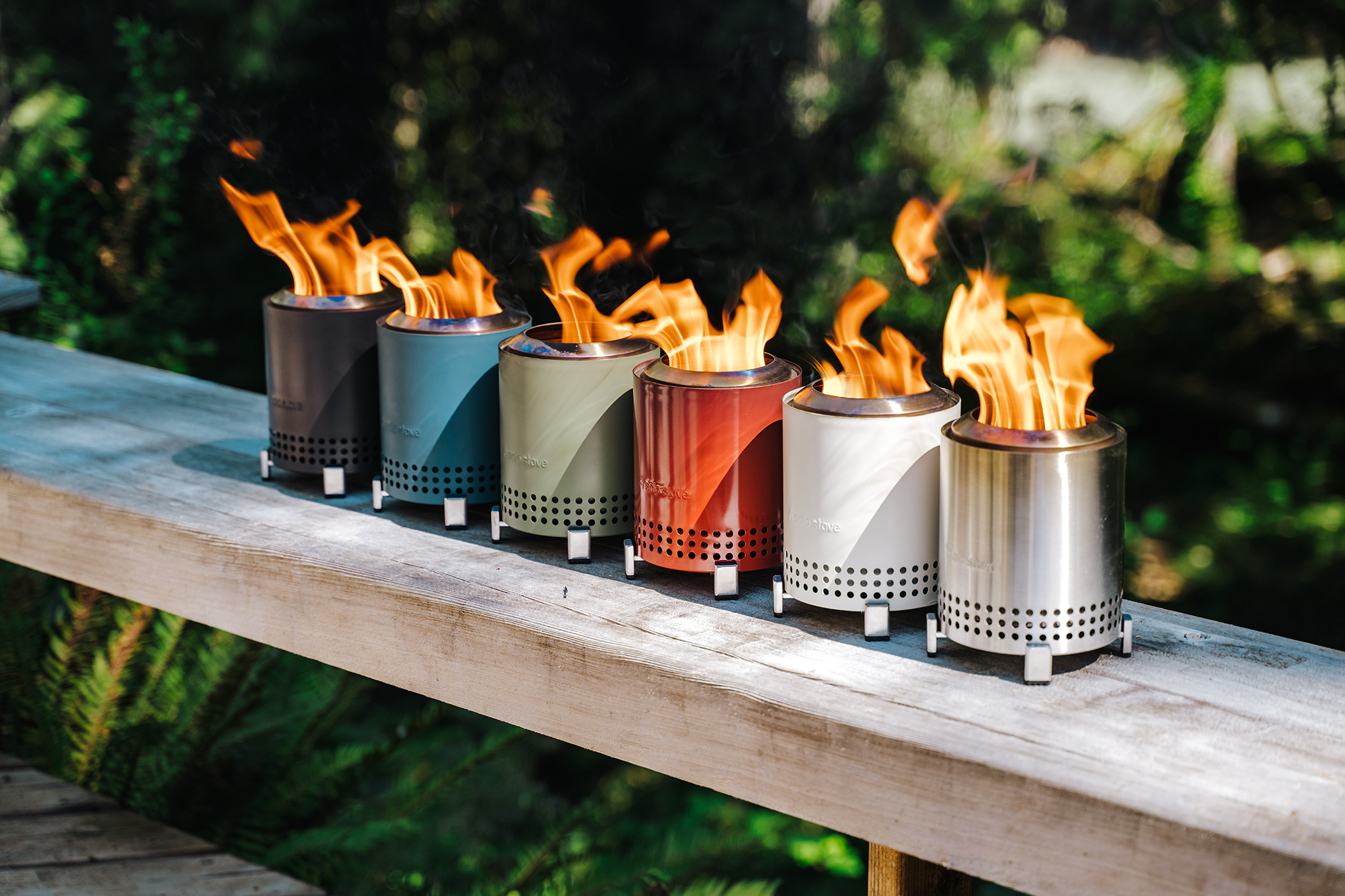
A portable fire pit is a great option for homes.
The answer to this question depends entirely on which residential area you live in. Thus, the best thing to do before the purchase and installation of your new fire pit, it’s best to contact your local council and enquire whether a permit is necessary.
However, if you install a stand-alone wood-burning, gel fuel, or propane gas unit, it is unlikely that you will need a permit. The only unit that will more than likely need a permit will be the fire pit that uses a natural gas installation as its incendiary source.
Yard preparations
Irrespective of what fuel your fire pit uses, it is vital to cut trees back so that there are no overhanging branches that might catch fire. Secondly, it is essential to remove all dry brush and leaves. It is not worth taking the risk of your yard catching fire.
Thirdly, it is equally important to level the area where you intend to install your new fire pit. And, finally, the area’s drainage needs to be attended to. Do not install the unit in an area with poor drainage. Otherwise, pools of water could destroy the brickwork, or your fire pit bowl will not be level, causing the fire to burn unevenly. Thus, it can result in an accident where a family member or friend ends up in the hospital with nasty third-degree burns. The quintessential point here is that irrespective of what fuel source you use, fire has the potential to be dangerous, if not treated with respect, it can result in long-lasting, expensive damage to property and human life.
Final Thoughts
The installation of a fire pit is currently a growing trend in backyard entertainment-area renovations. Additionally, their versatility also allows for the installation in an existing entertainment area in your backyard. You do not need to make significant improvements to your yard to install a fire pit. Therefore, they are well worth the expense because of the value they add to your outdoor entertainment area or backyard.
Light up your backyard today!
Fire up your weekends and evening installing a cool and elegant fire pit on your backyard.


